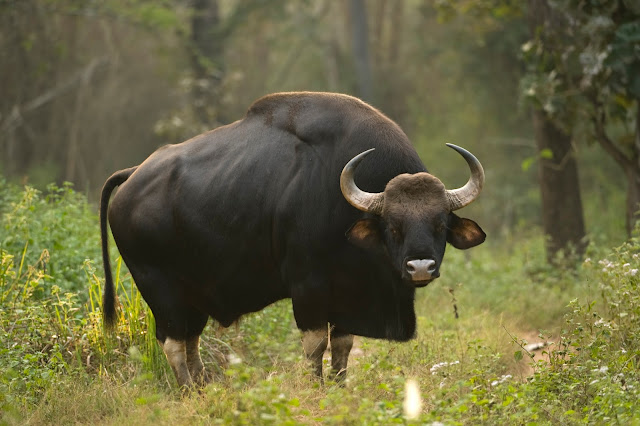Large Spotted Civet
Now, let's see some rare and unknown members of Western Ghats of India.
Let's talk about "Malabar Large spotted Civet"
Introduction
- The Malabar large spotted Civet, also known as the Malabar civet, is a viverrid endemic to the Western Ghats of India.
- It is listed as Critically Endangered by IUCN as its population size is estimated to number fewer than 250 mature individuals, with no subpopulation greater than 50 individuals.
- It is also known as Kannan chandu and Male meru in Kerala.
Physical Characteristics
- The Malabar large-spotted civet is dusky gray.
- It has a dark mark on the cheek, large transverse dark marks on the back and sides.
- Two obliquely transverse dark lines on the neck. These marks are more pronounced than in the Large Indian Civet.
- Its throat and neck are white. A mane starts between the shoulders. Its tail is ringed with dark bands.
- The feet are dark. It differs from the large -spotted civet by the greater nakedness of the soles of the feet.
- A male individual kept in the Zoological Gardens of Trivandrum in the 1930s measured 30 inch. (76 cm) in head and body with a 13 inch. (33 cm) long tail and weighted 6.6 kg.
- Generation length is about 5.88 years.
Diet
- Malabar large-spotted civets mainly feed on small mammals, birds, snakes, frogs, fruits and eggs.
Distribution and Habitat
- In the 19th century, the Malabar civet occurred throughout the Malabar coast from the latitude of Honore to Cape Comorin. It inhabited the forests and richly wooded lowland, and was occasionally found on elevated forest tracts.
- Until the 1960s, extensive deforestation has reduced most off the natural forests in the entire stretch of the coastal Western Ghats. By the 1960s, the Malabar civet was thought to be near extinction. in 1987, one individual was sighted in Kerala.
- Interview conducted in the early 1990s among local hunters indicated the presence of Malabar civet in protected areas of Karnataka. During camera trapping surveys in lowland evergreen and semi-evergreen forests in the Western Ghats of Karnataka and Kerala from April 2006 to March 2007, no photographic record was obtained in a total of 1084 camera trap nights.
- They are solitary and active at night.
Ecology and Behaviour
- Malabar civets are considered nocturnal and so elusive that little is known about their biology and ecology apart from habitat use.
Breeding
- Little is known about reproduction in Malabar large-spotted Civets.
Predator
- Humans are predators of Malabar large-spotted Civets.





Comments
Post a Comment